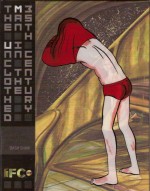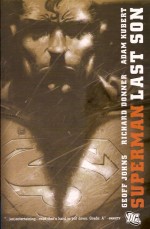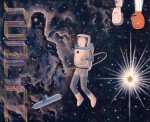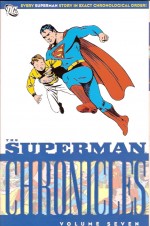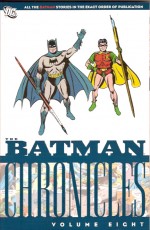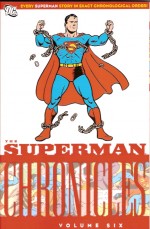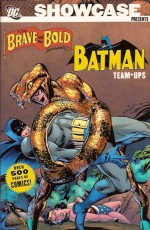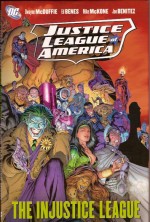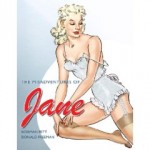
By Roy Thomas, Werner Roth, Don Heck, Steranko & various (Marvel)
ISBN: 978-0-7851-2116-9
X-Men was never one of young Marvel’s top titles but it did secure a devout and dedicated following, with the freakish energy of Jack Kirby’s heroic dynamism comfortably translating into the sheer, sleek prettiness of Werner Roth as the blunt tension of hunted outsider kids settled into a pastiche of the college and school scenarios so familiar to the students who were the series’ main audience.
The core team still consisted of tragic Cyclops, ebullient Iceman, wealthy golden boy Angel and erudite brutish geek Beast in training with Professor Charles Xavier, a wheelchair-bound telepath dedicated to brokering peace and integration between the masses of humanity and the gradually emerging race of mutant Homo Superior. But by the time of this massive black and white tome (collecting issued #25-53 and the crossover Avengers #53) change was definitely in the air.
Jean Grey, Marvel Girl had recently left the team to attend university – although she still managed to turn up in every issue – and since Roy Thomas had replaced Stan Lee as writer a much younger atmosphere permeated the stories. ‘The Power and the Pendant’ (X-Men #25, October 1966, with inking by Dick Ayers) found the boys tracking a new menace, El Tigre; a South American hunter visiting New York to steal an amulet which granted him god-like powers, before returning to the Amazonian San Rico with the mutant heroes in hot pursuit for a cataclysmic showdown in ‘Holocaust!’
Issue #27 saw the return of some old foes in ‘Re-enter: The Mimic!’ as the mesmerising Puppet Master pitted the power-duplicating Calvin Rankin against a team already split by dissention, whilst in ‘The Wail of the Banshee!’ Rankin joined the X-Men in a tale which also introduced the sonic-powered mutant (eventually to become a valued team-mate and team-leader) as a deadly threat in the opening instalment of an ambitious extended epic which featured the global menace of the sinister organisation Factor Three.
John Tartaglione inked the bright and breezy thriller ‘When Titans Clash!’ as a power duplicating Super-Adaptoid nearly absorbed the entire team before ending the Mimic’s career, whilst Jack Sparling and Tartaglione illustrated ‘The Warlock Wakes’ wherein Merlin (an old Thor foe) got a stylish upgrade to malevolent mutant menace, and #31 (Roth and Tartaglione) had Marvel Girl and the boys tackle an Iron Man clone who was also an accidental time bomb in ‘We Must Destroy… the Cobalt Man!’
A somewhat watered down version of the counter-culture had been slowly creeping into these tales of teenaged triumph and tragedy, mostly for comedic balance, but they were – along with Peter Parker in Amazing Spider-Man – some of the earliest indications of the changing face of America. ‘Beware the Juggernaut, My Son!’ and its conclusion ‘Into the Crimson Cosmos!’ (guest-starring Doctor Strange and his mentor the Ancient One) extended that experience when the Professor was abducted by Factor Three and the kids were forced to stand alone against an unstoppable mystic monster.
Dan Adkins in full Wally Wood appreciation mode memorably illustrated #34’s ‘War… In a World of Darkness!’ as the team’s search for Xavier took them into the middle of a subterranean civil war between Tyrannus and the Mole Man, and he also inked Werner Roth on ‘Along Came A Spider…’ as everybody’s favourite wall-crawler was mistaken for a Factor Three flunky by the increasingly desperate X-Men. ‘Mekano Lives’ (with art from Ross Andru and George Roussos, nee Bell) found the team delayed in their attempts to follow a lead to Europe by a troubled rich kid with a stolen exo-skeleton super-suit…
Don Heck stepped in as inker over Andru’s pencils with #37, ‘We, the Jury…’ when the mutants finally found Factor Three – allied to a host of their old mutant foes – and ready to trigger an atomic war. Heck assumed the penciller’s role for ‘The Sinister Shadow of… Doomsday!’ (inked by “Bellâ€), before concluding the saga with the Vince Colletta embellished ‘The Fateful Finale!’
Werner Roth had not departed the mutant melee: with issue #38 a classy back-up feature had commenced, and his slick illustration was perfect for the fascinating Origins of the X-Men series. Inked by John Verpoorten ‘A Man Called… X’ began the hidden history of Cyclops, also revealing how Xavier began his relationship with FBI agent Fred Duncan… The second instalment ‘Lonely are the Hunted!’ displayed humanity in mob mode as terrified citizens rioted and stalked the newly “outed†mutant Scott Summers: scenes reminiscent of contemporary race-riots that would fuel the racial outcast metaphor of the later Chris Claremont team.
Thomas, Heck and George Tuska ushered in a new era for the team with #40’s ‘The Mask of the Monster!’ as, now clad in individual costumes rather than superhero school uniforms, they tackled what seemed to be Frankenstein’s unholy creation whilst in the second feature Scott Summers met ‘The First Evil Mutant!’
‘Now Strikes… the Sub-Human!’ and the sequel ‘If I Should Die…’ introduced the tragic Grotesk, whose only dream was to destroy the entire planet, and who introduced the greatest change yet. I’m spoiling nothing now but when this story first ran the shock couldn’t be described when the last page showed the death of Charles Xavier. I’m convinced that at the time this was an honest plot development – removing an “old†figurehead and living deus ex machina from a “young†series, and I’m just as certain that his subsequent “return†a few years later was an inadvisable reaction to dwindling sales…
From the rear of those climactic issues ‘The Living Diamond!’ and ‘The End… or the Beginning?’ (this last inked by neophyte Herb Trimpe) signalled the beginning of The Xavier School for Gifted Children as the Professor took the fugitive Scott Summers under his wing and began his Project: X-Men. Issue #43 began the reinvention of the mutant team with ‘The Torch is Passed!’ (Thomas, Tuska & Tartaglione) as arch-nemesis Magneto returned with reluctant confederates Toad, Quicksilver and Scarlet Witch to ensnare the bereaved heroes.
This was supported by a back-up tale ‘Call Him… Cyclops’ which revealed the secrets of his awesome eye-blasts, whilst the next issue ‘Red Raven, Red Raven…’ saw the Angel escape and encounter a revived Golden Age Timely Comics hero in a stirring yarn from Thomas, Gary Friedrich, Heck, Roth and Tartaglione. This was accompanied by the opening of the next Origins chapter-play when ‘The Iceman Cometh!’ courtesy of Friedrich, Tuska and Verpoorten.
X-Men #45 led with ‘When Mutants Clash!’ as Cyclops also escaped only to encounter the highly conflicted Quicksilver; a battle that concluded with Magneto’s defeat in Avengers #53 ‘In Battle Joined’ by Thomas, John Buscema and Tuska, whilst back in #45 Iceman’s story continued in ‘And the Mob Cried… Vengeance!’
‘The End of the X-Men!’ occurred in issue #46, with the reading of Charles Xavier’s will. Agent Duncan reappeared and ordered the team to split-up, to monitor different parts of the country for mutant activity just as the unstoppable Juggernaut turned up once more, and Iceman’s origin concluded with ‘…And Then There were Two!’
Friedrich was joined by Arnold Drake to script Beast and Iceman’s adventure ‘The Warlock Wears Three Faces!’ as the ancient mutant Merlin once more re-branded himself: this time as the psychedelic guru Maha Yogi, and Drake, Roth and Verpoorten explained the cool kid’s powers in the info feature ‘I, the Iceman.’ As full scripter Drake penned The Cyclops and Marvel Girl tale, ‘Beware Computo, Commander of the Robot Hive’, a pacy thriller with a surprise guest villain, whilst ‘Your’s Truly the Beast’ wrong-footed everybody by explaining his powers before actually telling his origin epic.
X-Men #49 gave a tantalising taste of things to come with a startling and stylish Jim Steranko cover, behind which Drake, Heck, Roth and Tartaglione revealed ‘Who Dares Defy… the Demi-Men?’: nominally an Angel story but one which reunited the team to confront the assembled mutant hordes of Mesmero and Iceman’s new girlfriend – the daughter of Magneto! This shocker was supplemented by ‘A Beast is Born.’
Drake, Steranko and Tartaglione reached incredible heights with the magnificent ‘City of Mutants’ in #50; a visual tour de force that remains as spectacular now it did in 1968, but which was actually surpassed by Magneto’s return as ‘The Devil had a Daughter’ in #51 before the saga concluded in the disappointing ‘Twilight of the Mutants!’
Don’t misunderstand me, however: This isn’t a bad story, but after two issues of Steranko in his creative prime, nobody could satisfactorily end this tale, and I pity Heck and Roth for having to try.
The Beast origin chapters in those issues were ‘This Boy, This Bombshell’, ‘The Lure of the Beast-Nappers!’ and ‘The Crimes of the Conquistador!’, and that particular epic of child exploitation and the isolation of being different ended in #53’s ‘Welcome to the Club, Beast!’ but that issue’s main claim to notoriety was the lead feature which was drawn by another superstar in the making.
Hard to believe now, but in the 1960s X-Men was a series in perpetual sales crises, and a lot of great talent was thrown at it back then. ‘The Rage of Blastaar!’ was illustrated by a young Barry Smith – still in his Kirby appreciation phase – and his unique interpretation of this off-beat battle-blockbuster from Arnold Drake, inked by the enigmatic Michael Dee, is memorable but regrettably brisk.
These tales perfectly display Marvel’s evolution from quirky action tales to the more fraught, breastbeating, convoluted melodramas that inexorably led to the monolithic X-brand of today. Well drawn, highly readable stories are never unwelcome or out of favour though, and it should be remembered that everything here informs so very much of today’s mutant mythology. These are stories for the dedicated fan and newest convert, and never better packaged than in this economical tome. Everyone should own this book.
© 1966, 1967, 1968, 1969, 2006 Marvel Characters, Inc. All Rights Reserved.

